Premium Only Content

SDWPS #4 - Return Of The Jedi Is Better Than You Think
The original Star Wars trilogy’s flawed finale still succeeds with its heart of gold.
From Wikipedia:
Return of the Jedi (also known as Star Wars: Episode VI – Return of the Jedi) is a 1983 American epic space opera film directed by Richard Marquand. The screenplay is by Lawrence Kasdan and George Lucas from a story by Lucas, who was also the executive producer. It is the third installment in the original Star Wars trilogy, the third film to be produced, and the sixth film in the "Skywalker saga". It takes place one year after The Empire Strikes Back. The film stars Mark Hamill, Harrison Ford, Carrie Fisher, Billy Dee Williams, Anthony Daniels, David Prowse, Kenny Baker, Peter Mayhew and Frank Oz.
Transcript:
The Return of the Jedi is not known for being perfect, and is easily the hardest of the original trilogy to give proper credit to. It successfully nails the landing on Luke’s arc—which was probably the hardest task—but the landing isn’t exactly smooth. Forty years of special effects advancement and terrible imitations later, The Return of the Jedi still contains probably my favorite space battle in all of cinema, but the scenes taking place on the planet below have led to legendarily contentious fan debates ever since the film came out. It spends its first third rescuing Han Solo, and the rest of the film underusing him. It’s first act villain has way better dialogue than its third act villain, and Jabba doesn’t even speak English. This film’s unbridled success or cringe-inducing failure at what it’s trying to accomplish ping-pongs wildly back in forth, often within in the same scene. Still, as someone who wasn’t even alive when it came out, ROTJ was the capstone that spoiled me for the wider world of big-budget sci-fi. Say what you want about Dune, Star Trek, Halo, Battlestar Galactica, or the unstoppable MCU juggernaut—the Star Wars Original Trilogy remains my favorite, and for good reason.
As I mentioned in my piece on The Empire Strikes Back, the concept of a sequel is a deceptively amorphous idea. Empire managed to achieve a lot by picking up where our characters left off, and establishing each of our main trio’s main conflicts right up front. Return of the Jedi instead establishes parallelism in its opening crawl, reminding us of the introduction to the first film.
The opening shot also mirror’s A New Hope’s, with the Star Destroyer overhead and the planet below.
What’s new this time is being introduced to the Death Star immediately. It was a surprise to me to learn that some people were disappointed to have the Death Star reappear in this film, but I’ve never quite understood why. In the same way that we only slowly learn that Vader is on board the shuttle, the fact that the Death Star appears immediately is a tip-off that there’s something more going on. As a matter of fact, I think this portrayal of the Death Star is my favorite, as it not only displays the Empire’s public hubris, but how the progress of the war has forced even the Emperor to take the rebellion seriously.
The Second Death Star reminds me of a hilariously ambitious public works project gone horribly wrong. The thing doesn't even seem capable of locomotion yet, and requires additional shielding from the moon it orbits. Only one of its core functions is ever shown to work on its own—the superlaser—and for most of the film it’s a fairly reasonable assumption that this too is offline.
The point is, Return of the Jedi brings back the Death Star, but as a red herring for deeper things, rather than retreading the finale of the first film with merely cosmetic differences. Star Wars has more to offer than merely bigger booms and countdown timers, and nowhere is that more clear than this film’s usage of the Imperial battle station.
As Vader’s shuttle glides into the landing bay, Jedi continues mirroring A New Hope with Vader as the first main character to be introduced. In the ruthless, practical manner we’ve become accustomed to, he dismisses the nervous Imperial commander’s flattery and excuses. This is really the only film where Vader is completely taken seriously by the Imperial leadership, and this is seemingly to make room for a different conflict—between Vader and the Emperor, who Vader fittingly describes as “less forgiving than (he) is.”
Screenwriter Blake Snyder notes the theme of a film should be established early in Act 1, and is often related directly to a specific statement said by a character. Here we have a textbook example. Note the use of the word forgiveness rather than redemption. Every now and then I hear someone say the theme of this film is redemption, and while they’re not technically wrong, it still makes me cringe. “Redemption” is often thought of as a task, an opportunity—a way to atone. Atonement is earned by morally ambiguous badasses (mostly by blowing away a bunch of morally villainous badasses). Forgiveness is granted to villains by their victims. Forgiveness is what makes Return of the Jedi unique, what keeps it chugging along where other films peter out into bland platitudes and somber music set against slo-mo explosions.
Meanwhile, on Tatooine, Threepio and R2 are wandering the desert, another nod to A New Hope. It’s poetic, but it’s also a good way of illustrating contrast—our protagonists have grown significantly since the first film, and putting them in a familiar setting emphasizes this.
That’s not to say things aren’t going to be different this time around. Mos Eisley is described by Obi Wan as the ultimate “wretched hive of scum and villainy,” but knowing that Jabba’s Palace was just a few blocks down the street makes me think he didn’t get out very much. Tatooine in the first film is analogous to an outpost of Imperial Rome, nominally run by the Empire, but small enough to escape major notice. Sure, the occasional shooting happens, but that’s what happens when a place is packed full of aspiring gunslingers. Jabba’s palace shows us a different side of Tatooine—the decadent court of the mad king of the Outer Rim. Jabba is the Godfather of Star Wars, the Sultan of Space Slugs, his desert mansion a maze of festering horrors a la Count Dracula. He’s a warlord who basks in casual cruelty, finds attempts to extort him amusing, and does it all while being completely baked on space hookah juice. While the Imperial war machine is often openly compared to historical authoritarians like the German fascists, Jabba embodies a much older, more historically common kind of brutality, providing contrast.
Continuing the parallel pacing, it takes nearly ten minutes for Luke Skywalker to appear onscreen, and his first appearance is a bit of a cheat—he appears as a hologram (like Leia in the first film). Even so, that first appearance opens a serious can of worms for the first-time viewer. In Empire, all our main characters are introduced in such a way that we can easily fill in the blanks between one movie and the next. Luke went from farm boy pilot in over his head to a competent and talented soldier with a personal beef with the Empire. Empire also battered these straightforward characters and left their futures in doubt. There were no guarantees about what our main trio would become. Luke here is a much different animal—a mysterious, black-clad herald claiming openly to be a Jedi Knight. He applies a heavy dose of erudite flattery to Jabba before giving both his favorite droids to the mad Hutt, to the surprise of everyone (including Threepio). I think it’s fairly clear from Luke’s exaggerated graciousness that he knew that Jabba would both refuse to bargain for Solo and keep the droids anyway, but there’s still something about him we’re not sure what to make of, and that’s what sets the tone for this act—nothing is what it seems. Luke is challenging Jabba to a battle of wits.
After a cringe-inducing song and dance number followed by PG-straining execution of Jabba’s personal dancer to something under the floor, the tone abruptly sidesteps into comedy, and Chewie is dragged into the throne room on a leash (because he’s a dog, get it?). You can tell it’s comedy because the bounty hunter is a whole foot shorter than he is, and despite being restrained Chewie seems to have punched about three different people flat on the way in, including one guy who was shooting at him. Jabba, of course, takes it in stride, burps, and summons his new interpreter—C-3PO, human-cyborg relations.
As an author who has published at least one work of fiction, it’s finally clear to me why Threepio is an important part of the Star Wars cast. It would be easy to say “comic relief,” but it’s a bit more sophisticated than that. Threepio's job is basically to react out loud to whatever crazy thing is going on, yes, but getting him into a position where he can do that effectively is actually a quite impressive trick on the writer’s part. SEAL teams don’t take their accountants with them into the jungle on missions, regardless of how funny it would be to have him there. I wouldn’t even say that it was Luke’s plan to specifically have Threepio be Jabba’s interpreter—that decision depends on too many things going right that he has no control over (more on Luke’s plan in a bit). This is the writer having fun, and trying to make sure we have fun, and that’s what makes the bit work. Jabba has to talk down a five-foot grenade-wielding extortionist through the voice of a prissy butler, while Chewie stands there looking upset (he obviously didn’t like this part of the plan any more than he liked it the last time they tried it on the Death Star—another mirror moment).
What really nails this scene home is how Jabba responds to being threatened with a bomb, as it works almost any way you cut it. We know that Jabba is cruel and that Jabba is opportunistic—this is the scene that convinced me that Jabba was smart.
Instead of giving Yak-Face what “he" demands, Jabba laughs and bargains him down a couple of notches.
The bounty hunter even gets a curt nod from Boba Fett, who has been very seriously standing in the corner looking very cool.
By the way, this is a little-mentioned moment, but it’s one that stands out to me, because I think this is the moment a lot of people realize they like Boba Fett. While everyone else in the room is either reveling in the horrific entertainment or screaming in fear at the presence of a live bomb, Fett is the only one who seems to have a plan (bringing his rifle to bear). Once Jabba starts laughing and offers to cut a deal, Fett decides game has to respect game, and his nod to Leia intrigues us. Fett isn’t a bully. He respects his enemies, and as his enemy, we respect him back.
Leia’s gambit here is the odd thing. From a writer’s perspective, the purpose of this scene is obvious—to do something daring and flashy and throw us off from believing Leia is the person under the bounty hunter’s helmet. As it turns out of course, it is Leia, and now we have to ask ourselves why she thought threatening to drop a live grenade in a room full of trigger-happy gunmen was the best way to maintain her cover. For once, I’m not sure there’s a good answer to that question. The best answer I can think of is an answer that sounds a bit like a cop-out, but stick with me for a bit, and I think we’ll end up on close to the same page—Luke told her to do it.
As Chewie is taken away by the pig guards, we notice Lando moonlighting as a mercenary, in perhaps one of the most logical jumps we’ve seen so far. Lando might have been a higher class of rogue than Han, but he was always a rogue, and the idea he could get himself a job at the palace makes perfect sense.
As the Tatooine suns set on another terrible day, we see a brief wildlife drama as a desert frog thing snaps up a small critter that got too close. This is what’s rough about this first act and what works. Tatooine is an unjust place, run by unjust people, against a backdrop of a harsh, predatory wilderness. Intentionally or not, Lucas sets the re-emergence of the first new Jedi Knight against the naked barbarism of Jabba rather than the technocratic sophistry of the Empire and its Sith overlords, and that’s a good thing. Star Wars is not about a perfect reality that may be, but about living in the imperfect reality that is—and our heroes are about to make their next move.
At minute twenty or thereabouts, Leia unfreezes Han, and we finally meet two of our three protagonists in person. Note that, aside from Luke’s cryptic message earlier, we’ve spent the entire rest of the setup with side characters or antagonists. I’m honestly not sure whether to say this is a weakness per se, but it’s notable to me that Return of the Jedi feels like a significantly slower movie than the previous two. Twenty minutes of setup is a lot of french toasting setup for crying out loud, especially for a film that will be shortly leaving this planet and spending a bunch of time setting us up somewhere else. What I do remember appreciating is that this whole setup is very obviously about one specific goal, and it’s a goal that as a kid I wanted very badly—the rescue of Han Solo.
Fans love all kinds of different things about Han Solo, but one of the primary ones for me is the fact that he might have not made it. Sure, once you get old enough to figure out what a “script” is you realize he was written not to die, but then I found out that Harrison Ford wanted Solo dead, and suddenly it’s a miracle again (though a bit more bittersweet). Like I said before, it’s hard to judge these films completely objectively, but seriously, having Han both metaphorically die and be rescued from hell is one of my favorite things about these films, and it serves double duty as a thematic mirror for the redemption of Darth Vader. Sure, Han doesn’t need to be “forgiven” during this film, at least by his friends, but that’s because Han had his redemptive moment two movies ago. Solo goes from hired gun to loyal friend in just the first movie, but all through The Empire Strikes Back he’s dealing with the very real consequences of that choice—namely, that staying with the rebels puts a target on his back (more than one, in fact). Doing the right thing isn’t all sunshine and rainbows, especially when you have a lot of debt with the wrong people. Vader, on the other hand, has a lot of very similar troubles, and no friends at all—at least, that he knows about.
Whatever his personal feelings, Harrison Ford does a brilliant job acting in this first act, perfectly portraying Solo’s worst hangover ever. Han seems to spend equal amounts of time shaking off a headache, begging for mercy, then catapulting back the other way to zinging one-liners and skeptical quips.
Speaking of begging for mercy, Jabba suddenly reveals himself and his entire entourage behind the next door curtain.
Remember how I said Jabba was smart? This is why.
It always made sense to me is that he smelled a rat when Leia brought Chewie in. No one makes those kinds of demands unless they're very brave, very stupid, or trying to slip something else under someone’s nose. Of course, you can’t argue with a live grenade, so of course he saves face by saying he admires her—then has a quiet word with security, and waits to see what she does. It’s all very clever and logical, actually, and more evidence that the writers are trying to build up Jabba as a proper challenge to Luke. The only problem is, of course, that it still seems like kind of a stupid thing for Leia to do, and she’s not stupid. In fact, it’s two stupid things in a row—firstly, playing patty-grenade, and secondly trying to break Han out without help.
There’s a surprising number of articles on the internet trying to piece together what our heroes’ plan exactly was, but to me it makes perfect sense that, in their desire to set Jabba up as a surprise galaxy-brain that they just didn’t quite think that through.
Besides, there’s at least half a reason why their plan is so off-the-wall, and it has to do with our last character introduction—the return of the Jedi himself, Luke Skywalker.
Luke makes a huge impression in his first scene, in no little part because the scene immediately preceding it is Chewie explaining to an unimpressed Han that Luke is a Jedi and going to break them out. We ourselves haven’t seen any direct evidence that Luke wasn’t bluffing for the hologram earlier. By the time he enters the palace, chokes out the guards, and then successfully mind-tricks the Majordomo into introducing him to Jabba, we’re pretty sure Luke’s leveled up a bit. I would even argue that it’s very strongly suggested that the reason his apparently scattershot master plan appears scattershot is because he’s doing what apparently every other force user eventually learns how to do. He sees, like Yoda did (and the Emperor later claims to do), not the whole future, but glimpses and vague snatches of information, most of which can’t be acted on until he reaches that point in the plan, at which point he realizes that things are still on track.
Moving on to the Pit of Carkoon fight, this is about the time that someone like me would start complaining about Boba Fett’s short and ignominious contribution to the fight, but I’m going to save that for another time. Focusing on the positive here.
Anyways, with the closing of Act I, this is where the film really starts to bog down. For starters, we spent all of the last film setting up Leia and Han’s romance, but from the point where our heroes leave Tatooine, we split off with Luke and head to Dagobah. Yes, I’m aware there’s a cut scene just prior where our heroes have a bit longer to say goodbye, but that’s not what’s actually missing. What’s missing is the reunion between Han and Leia—a real reunion, while they’re actually alone, just the two of them. I don’t think most people notice it immediately, but a story is a system, and an inconsistency at one point can result in glitches later on. In this case, I think the writers thought we needed to tie off Luke’s end of the love triangle first. Thus, we have a long sequence where Yoda explains to Luke that he has a sister, Luke realizes that it’s Leia, thus redefining their relationship. The reason this is a bad solution is because there’s never really any indication that Leia or Luke have serious romantic feelings for each other, either last movie or especially in the beginning of this one (Yeah yeah, there’s that kiss early in Empire, but as I mentioned in my article on that film, Leia’s obviously doing that to piss Han off—either way, by the end of the movie her sympathies are obvious).
Besides all that, Luke’s busy becoming a warrior monk. In other words, there’s really not that much need to drag this out and spend lots of time explaining why Luke and Leia aren’t going to get together. In fact, this is probably the main reason that the writers didn’t feel Luke had to tell Leia and Han as soon as he saw them again. Behind-the-scenes troubles aside, dragging this plot point out until the very last minute for Han was a dumb decision on the writers’ part. It’s simply not a rich enough aspect of the film to stretch over this much run time.
Of course, we also have Obi-Wan’s famously lame “from a certain point of view” line, which supposedly justifies his lying before. Frankly, sometimes I feel like I’m the only person on the planet who doesn’t feel like their parents ever really lied to to them, and I find this trope severely overused. Of course, I say this knowing that I’ve used versions of this myself, as it’s a dramatic way of introducing hidden information to a story, but it has to be done carefully, or you can ruin the integrity of a character over something they wouldn’t actually do, which is the problem—I don’t think most people believed Obi-Wan would do this.
What’s really galling (and this is a kind of running theme with this film), is that there’s really no need for it at all. Obi-Wan can admit to a mistake, and we’ll forgive him (there’s that word again). It's his trying to justify the lie in such a sophistic way that really comes across as slimy. Simply rewrite two or three lines, and everything else justifies itself.
For instance, Vader specifically refers to the fact that Obi-Wan once thought “as you(Luke) do,” implying that Obi-Wan thought at some point that Vader could be redeemed, and has since lost faith in that possibility. it’s also true that Anakin took the name Vader because that’s what Sith do—they are reborn as something else. When Darth Vader and Darth Sideous speak of Anakin, they talk as if he’s a separate person from Vader. Later, when Luke finally meets Vader in person and uses Anakin, Vader specifically replies “that name no longer has any meaning for me.”It all feels a bit like these lines are meant to reinforce Obi-Wan’s statement, but in a way it does it’s job too well—the hints are what work, and Obi-Wan’s justification still feels like a cheat.
What also really throws a wet blanket on everything right about now is that it feels like we’re supposed to be having fun at this point in the film, and instead we’re spending a lot of time in setting up the next act. In many ways, this film feels like two or even three films smushed together. Luke’s discussion with Obi-Wan feels like something that might have been better placed around the midpoint, rather than minute forty, especially since we’re going from this scene straight into another talking scene.
This is kind of sad, because I imagine a lot of folks were so fed up with the lack of explosions around this point, that they didn’t appreciate the actually pretty good briefing scene on the Rebel command ship. This may speak to my deeply embedded war movie fascination, but when a briefing scene is actually well executed, I rather enjoy them. Like I’ve said, over and over by now, Star Wars is an Epic with action scenes, not an action movie with epic scenes, and even though our heroes aren’t doing a whole lot during this scene, it’s building very important context for what the next two-thirds of the movie is going to be about. Our heroes are important pieces in this game, but their movements only have meaning if the audience has a good view of the board, and that’s what this scene provides.
Like the finale of the first film and the beginning of the last one, this scene also reminds us who the secondary players are and gives them roles that are surprisingly important. In the first film, Luke was the wonder kid with the plot armor needed to blow up the Death Star, but as he has passed on to bigger and better things, such paltry tactical objectives as dealing the killing blow to the Empire’s most powerful superweapon is shunted onto Lando and Wedge, who themselves report to the Admiral Ackbar, an escaped Red Lobster mascot whose species literally has “Calamari” in the name (like I said, I saw this at such a young age that the ridiculousness of it only really dawned on me long afterwards. It’s played impressively straight.). Once again, as our protagonists pick jobs out of the operational hat, we are reminded that they’re not the only people involved in this war. It’s no accident that Star Wars fans all seem to have a favorite, or even several favorite side characters. The story is almost always thorough about reminding us that even the unnamed characters are heroes of their own story, and just because the camera doesn’t linger on them doesn’t mean they don’t matter.
Lando even gets a minor upgrade when his fate becomes woven together with the Millennium Falcon’s. In research for this episode, at least one reviewer noted this was a bit odd for Han to do, seeing as he’d already been separated from the Falcon for so long—but honestly, this always made sense to me. Lando’s already basically been driving it for however long Han’s been frozen. Besides, I have a brother who’s is exactly like Han. He’s the kind of person who will insist on giving you something because “it just makes sense” and then only afterwards realize that you might break it and ask you not to. It’s a better way of establishing Lando and Han’s complex but brotherly relationship than many dumber and less colorful ways I’ve seen in better regarded movies.
Luke and Vader’s relationship, even from as far away as different ships, also remains interesting. Why Vader allows the Rebels to land on the moon despite sensing his son among them is one of the first real indications that something is very wrong with the Rebel’s plan, and that one way or the other, Luke and Vader will have to deal with each other very soon.
Upon landing, we finally get our first action scene in about twenty minutes. The speeder bike chase is awesome, and it’s awesome for a lot of reasons, but the one I think is the most awesome reason it’s awesome is redwoods. Redwoods are like dinosaurs—they’re huge and alien, until you see one in person and they’re incredibly, awe-inspiringly real. It’s one of the cleverest things about this film that the setting for the finale is both this pretty to look at and yet (since it’s completely real) it never seems to age. Endor preserves the awe of seeing a tree as thick as a grain silo by reminding you that it wasn’t just the result of a CGI artist upscaling a model by 300%.
However, once it’s over, the plot gets right back to fragmenting again. “General” Han is leading a squad of what looks to be at least a baker’s dozen of Rebel Commandos, all of whom might as well not exist. Apparently, the film spent all its side-character screen time on the fighter pilots—and, as we’re about to see, the infamous Ewoks.
Now, the fan discourse over Ewoks is legendary, but to be honest, like Boba Fett’s “death,” the problem isn’t so much that they exist as much as how they’re implemented. Ewoks, in my opinion, aren’t really that bad. They’re funny, cute, and actually have some well-developed interactions with the protagonists (note that they stop doing what C-3PO wants after the Ewok witch doctor with the skull on his head shows up—as keeper of the tribe religion he’s not thrilled that some shiny metal man is here to replace him). They have a couple of competent moments before the battle really gets started, showing the Rebels the back door to the shield bunker and drawing away the guards in an entertaining manner.
If you ask me (and I do), what most people hate about Ewoks is that they violate the tone set up in the first act. The start of this film is screaming loud and clear that being cute in this universe makes you finger food for bigger, uglier things. The universe isn’t fair. You shouldn’t expect it to be.
Unless your an Ewok. Because, uh, Vietnam, and Nature vs Technology, or something.
Because many Bothans died to get the plans for the Death Star, but Ewoks can throw arrows and rocks at the same stormtroopers that went through Leia’s rebel crew in Episode IV like a Walmart semi-tractor-trailer through a jumping armadillo, turned Luke’s aunt and uncle into charcoal briquettes, and mercilessly gunned down Rebel infantry on Hoth, and the Ewoks still win.
We just can’t believe it.
And, once again, just like with Obi-Wan trying to justify his lie, this issue is entirely solvable with the barest of tweaks—that is, by giving the Rebel Commandos just a few minutes of actual screentime.
See, the problem we have is not believing that the Imperials wouldn’t be distracted by the Ewoks. The problem is that we don’t believe Ewoks would be able to deliver the killing blow (at least as many times as they supposedly do). Somebody with a blaster has to shoot the stormtrooper wrestling with three teddy bears. On top of that, there’s clearly too few troops present to be “an entire legion” as the Emperor claims a few scenes prior. Sure, he’s not a trustworthy individual, but…when it comes to this, why would he lie?
Seriously, if there was any part of this series worth adding to for the special edition, this would have been it. This is the final battle—we deserve a proper firefight, and we only get about half of one. It’s sad.
But there again I’ve gotten off topic, because this isn’t about the lost potential, but that which was realized, and the space battle is utterly fantastic. To be honest, I think it’s far and away the best in the series, not just because of the scale and VFX, but because it’s both smart and dramatic. It’s practically it’s own side-story, running parallel to both Luke’s on the Death Star and Han and Leia’s down the ground. Lando, Akbar, and Wedge have just enough of a repertoire for us to emphasize with their perspective of the battle without requiring the same amount of in-depth development that our main three get. The battle has its own dramatic pacing, conflict between characters as they debate what to do in the face of certain death, a daredevil dive into the Death Star’s superstructure itself, followed by an intense escape as Lando and Wedge try to outrun the inevitable firestorm. It’s got sacrifice, it’s got timing, it’s got humor. It’s both more than you expect and, by comparison to modern explosion-fests, doesn’t overstay it’s welcome. It’s Epic in the best possible way, and the gold standard I measure big space battles by. The Original Trilogy consistently allows its heroes to be characters in a galactic war instead of the war reduced to expressions of the conflict between the characters. In a series as steeped in symbolism and abstract themes as Star Wars, this could have very easily happened, as it routinely does in Superhero films. I might even argue that a majority of stories claiming to follow in Star Wars’ footsteps fall most victim to this very thing, either eliminating or conflating theme and plot in ways that seriously muddy the translation to the audience. Instead, the Original Trilogy is usually happy to keep the spiritual spiritual and the concrete concrete, with the interaction between as understated as possible. Our heroes are “special,” to some degree, but in the end, they have to be team players and follow orders like everyone else. Characters like Admiral Ackbar remain beloved years later because they are more than plot devices to explain how the protagonists get from point A to point B. Luke’s entire fight in the throne room has remarkably little to do with the battle raging outside, instead expressing the battle between good and evil at the personal level, reminding us of a greater truth—that the line between good and evil runs down the middle of every heart, and cannot be defeated with swords or guns or ships, or even cuteness. Your decisions matter, and forgiveness is not merely a way of showing superiority, but necessary for peace.
And now we come to the last part, the best Return of the Jedi has to offer, and at the same time the worst. The Salvation of Darth Vader. While most people’s memory first recalls those final moments in the throne room, the subtle buildup is what really makes this work—and by buildup, I mean going all the way back to Empire. The part that usually gets missed, however, is the part I want to focus on now, and it’s buried near the end of Act II.
Like how the first act is reduced in popular imagination to “Carrie Fisher in a bikini,” the second act is often reduced to “friendly cannibal teddy bears.” While these are entertaining distractions, they’re far from the most important things about either sequence. The most important part of Act II happens after Luke saves them from the Ewoks, after the Ewoks decide to throw in with the Rebels, after Luke tells Leia that he’s figured out they’re siblings. The most important part of this act is that, when Luke informs Leia that he has to turn himself in to protect the team, he tells her that he’s going to try and convince the man who cut his hand off that it’s not too late to find Space Jesus.
Once again, this twist is now long taken for granted,
Regardless of who Vader once was, he currently is the man who dismembered his son for the sake of a conversation, and the second in command of the oppressive Galactic Empire, the institution Luke has dedicated his life to overthrowing. How can Luke absolve him of that? Perhaps there’s use to flipping him to the side of the Rebellion—but really, what are the chances of that? The Rebellion has nothing to offer Darth Vader. All he wants is Luke, and Luke he will presently have.
But Luke doesn’t want anything from Vader. He’s past that. He doesn’t even need Vader’s apology, and never asks for it.
What Luke wants is for his father to know peace. In other words, Luke has forgiven his father.
The scene doesn’t dwell on this detail, but what’s interesting is that it’s basically assumed. Between this film and the last one Luke passed from realizing that his father destroyed himself and those around him in pursuit of power, to reconciling that realization with the moral truth that if he hates his father he will inevitably hate himself (remember the cave?), all the way to deciding that there is enough worth saving about his father to give converting him a shot.
Now, what’s really clever about this setup is how it combines the metaphysical with the concrete. Like in Act I, we have an understanding that Luke catches glimpses of the future—not clear ones, but glimpses nonetheless. He’s not being stupid to think that Darth Vader can be converted. Fate has more or less forced him into making the choice of turning himself in, because Vader can home in on his presence like a beacon. One way or the other, the only way he has to protect the operation is to confront Vader sooner rather than later.
Once Luke turns himself in, he still doesn’t show anger towards Vader. He still never even mentions the lost hand. What would have become a continuous emotional roadblock in another film is completely skipped over as Luke keeps his eyes on the prize—saving the father he never had. Luke never expresses anger until Vader threatens to find and convert Leia. It’s all very profound and masterfully assembled.
So what’s the weak point?
The Emperor.
If you’ve ever heard the phrase “Something something dark side,” you know exactly what’s wrong with the Emperor’s dialogue. The Emperor feels like a character that was intended to be beguiling and confusing (his Sith name is Darth Sideous for crying out loud), but mainly comes across as confidently incorrect, stating moral absurdities like how Luke will inevitably fall to the Dark Side if he kills him.
Understand, the setup here is not only moral, but mental. The Emperor is lying—not only is he not personally unarmed (taser hands), but he has at his fingertips the single biggest gun present at this engagement, the Death Star itself. Just like Act I, we are intended to recognize that The Emperor and Luke are playing a battle of wits for the life of a third party, in this case Darth Vader. The trouble is that a sizable number of the people I discussed this scene with ended up getting sidetracked onto rabbit trails about whether the Jedi code allows for killing an unarmed tyrant where he sits, and whether this act would actually cause Luke to “turn into” a Sith. In other words, the audience is tempted to think the filmmaker wants us to take seriously the words of the character we should trust least.
What unfortunately reinforces this idea is that both Vader and Luke act as if he’s speaking the truth, when their established motivations both run counter to this idea. The Emperor never offers Luke anything Luke actually wants, simply asserting that Luke’s fall is inevitable (seemingly ad nauseam). Remember, Luke believes that he is going to die when the Rebels blow up the Death Star.
The Emperor never appeals to what he ought to believe is Luke’s true weak point—all the things Vader has done to hurt Luke, his friends, and the Rebellion. The Emperor does not believe in forgiveness. He believes Luke’s attitude is stupid, idealistic, and childish. These are the points where not only is Luke tempted, but we ourselves see ourselves being tempted. Vader has done bad things. Things that can never be undone. This is why it’s important that Luke already knows that this is not The Way. He doesn’t just not-hate Vader, he has made it all the way to loving him. However, as a result, there’s simply no compelling reason for him to not kill the Emperor where he sits or die in the process, unless it threatens his mission to turn his father to the Light—but here’s where things get really screwy.
Throughout this film, Vader’s goal is clearly presented as attempting to capture and turn Luke to the Dark Side, but his motivation for doing so is not so clear. If we take this film at face value, Vader is a beaten man who simply gives his master whatever he wants. However, if we take the last film at face value, Vader’s pitch to Luke is that they will together overthrow the Emperor, and “rule the Galaxy as father and son.” So Vader’s lying to someone—either Luke or The Emperor. It’s pretty well established in these films that the Sith value Power above all things (especially trust). Vader is established in the previous two films as an expert backstabber, to say nothing of the Sith “Rule of Two,” which appeared in later movies, establishing explicitly that Vader and the Emperor are in sort of semi-antagonistic relationship, where Vader achieves Master status by successfully stabbing his master in the back. This is commonplace among villains generally, but the Sith are noted to be explicitly evil because they institutionalize the practice and rationalize it in the tenets of their religion. They assert that eventually desire for power corrupts all relationships, and the goals of each self are by nature distinct and oppositional.
In other words, neither Luke nor Vader actually have that much motivation to not cut the Emperor down where he sits. At least, unless you read in that Vader is planning to do it later because The Emperor knows that Vader knows that The Emperor knows that Vader knows that three’s a crowd, and one of them is eventually getting the shaft (ha, irony).
This is why this story thread is at its best after it moves past the confusing mental jabs and into the duel itself, where Luke confronts a Vader that seems perfectly willing to cut him down if he proves too weak. Even here, a lot of the dialogue is too blunt and on the nose, but at least Vader’s motivation appears to remain consistent (corrupt his son into a suitable heir, allow Luke to take his place at the Emperor’s side, or kill Luke and find another apprentice).
Thus, when Luke finally realizes that there’s no guarantee that Vader will turn away, and is in fact threatening to hunt his sister down and turn her, he snaps and and beats his father to the floor. In the face of Vader’s rejection, we believe Luke would do it. Here again the film wants us to believe that Luke’s anger is what has compromised him, and concentrates dramatically on Luke’s hand and the Emperor’s approval, but that’s not what makes the moment profound. This is the first point at which I thought Luke really understood the temptation of the Dark Side, and the point at which we ourselves see how far we could go wrong.
This is why Luke’s line when he makes his mind up hits so hard—“I am a Jedi, like my father before me.” He's not just rejecting the Emperor and the Dark Side, but embracing the Light that the Jedi once represented. Without forgiveness, without grace, there can be no peace—the cycle of corruption the Sith worldview embraces will only continue in a new form, under a new name, without end. This is the crux of what this last battle is truly about. Not whether the Empire will survive, but what Luke—and by extension the Rebel Alliance themselves—will become once the Empire is defeated. Luke must chose to not only reject what is evil and corrupt about his father’s legacy, but embrace what is good about it.
Whether Luke saves his father or not, we now know that Luke has saved himself. He embraces what he believes to be true and right unto death, the choice his father failed to make.
The choice his father has just realized is still possible.
Now, I’m trying hard to justify this without directly alluding to the religious element, but I don’t think it’s a coincidence here that Lucas describes himself as a “Bhuddist Methodist,” and while lots of people feel free to cite the first half of that phrase and how it influences the entire cosmology of the Balance between Light and Dark, only the most brave or disagreeable are willing to bring in that second half and point out how the Christian ideal of forgiveness leading to redemption pervades this film. Luke can’t merely purify himself of hatred for his father to avoid the Dark Side. He doesn’t want to turn his father because this will turn the war in the Rebellion’s favor. By Sith standards, Luke is never in a position of power, and thus is never in a position to forgive anything. Eventually, the need to survive and the desire for power must turn him from his foolish ideas. Instead, Luke demonstrates that he is perfectly conscious of his ability to accept the consequences of any choice he wishes to make, and thus no amount of good-Sith-bad-Sith is going to change what he has decided he shall do. Luke realizes that his challenge is not to explain to Vader what Vader has done wrong. Expressing anger won’t help. He cannot change Vader by hating him. He cannot fix Vader by reminding him of everything he has done wrong, because Vader already knows this. There is no one that can hate Darth Vader more than he hates himself. There is only one thing that Luke can do to make an impression on his father, and that is, despite everything Vader done, to absolve him—not because Vader deserves it, but because Luke loves his father, and has decided he always will, no matter the cost.
And so, when the Emperor makes Vader choose between living to fight another day, and saving his son, Vader saves his son.
Given how central this theme is (and how often I’ve referred to it), it might surprise you to know that the original title for this film was Revenge of the Jedi, until Lucas had it changed. Granted, Luke is, in a way, the Jedi’s vengeance on the Sith, (and certainly their ultimate triumph). Outside of Luke’s efforts, this victory was indeed dealt via skillful and spectacular use of violence—but with that glorious victory, we carry away something that, rather than clashing, goes hand-in-hand. As Anakin was destroyed by the false promise of unjust power, he was redeemed by undeserved love. Perfect justice goes hand in hand with perfect mercy.
It would be easy at this point, to reduce this moral to a timely anecdote about how both sides of our current cultural divide could stand to learn a lesson, but this would be to sell this film’s timeless moral short. There is not one person you will ever meet who you will not have to forgive at least once, and those closest to you most often and most of all. Not one person who ever reads this text will not have to learn the art and moral necessity of forgiveness. Lucas was not satisfied to merely have the heroes kill the bad guy, get the girl, and go home. Instead, he made a profound parable of how hate leads to suffering, and how forgiveness leads to peace. There are few things in this world more real and valuable than that.
-
 14:29
14:29
MidasMoriarty
3 years agoWhy the AT&T Spinoff is Better than You Think
4 -
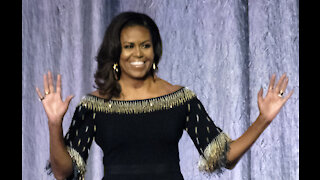 1:38
1:38
BANG Showbiz EN
3 years ago $0.03 earnedMichelle Obama think she's a better cook than Barack
1861 -
 2:28
2:28
KGUN
3 years agoBetter rain chances return next week
23 -
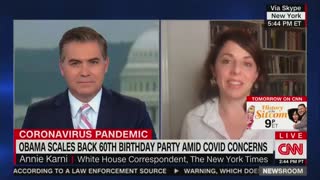 0:22
0:22
Dinesh D'Souza
3 years agoCNN Guest ADMITS Rich Dems Think They're Better Than Everyone Else
13.1K135 -
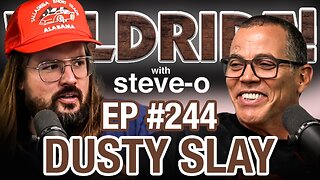 1:11:10
1:11:10
Steve-O's Wild Ride! Podcast
5 days ago $0.06 earnedDusty Slay Went From Selling Pesticides To Having A Netflix Special - Wild Ride #244
1.87K1 -
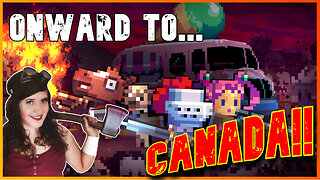 LIVE
LIVE
CocktailsConsoles
1 hour agoBE PART OF THE GAME!!| Death Road to Canada | Cocktails & Consoles Livestream
322 watching -
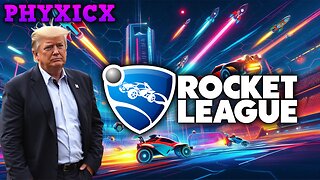 LIVE
LIVE
Phyxicx
3 hours agoWe're streaming again! - 11/26/2024
389 watching -
 LIVE
LIVE
GamingWithHemp
3 hours agoHanging with Hemp #103
198 watching -
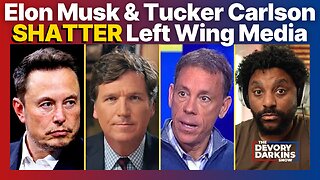 21:24
21:24
DeVory Darkins
1 day ago $1.28 earnedElon Musk and Tucker Carlson SHATTER Left Wing Media
3.84K24 -
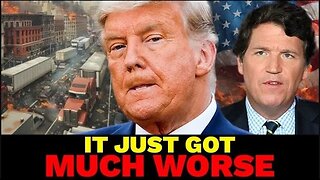 DVR
DVR
Stephen Gardner
31 minutes ago🔥Breaking: Trump JUST DID the UNEXPECTED | Tucker Carlson WARNS America!
3